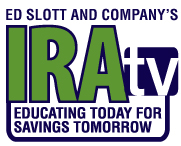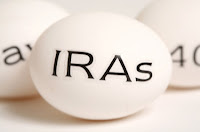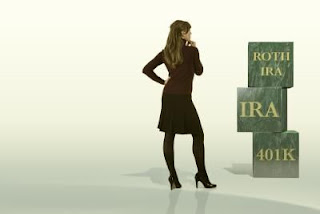 When individuals take withdrawals from their IRAs, it's usually a cash withdrawal. By cash, we don't mean dollar bills; instead it's usually done by issuing a check. But it's possible to take a non-cash withdrawal from certain IRAs. These non-cash distributions are known as property distributions or “in-kind” distributions.
When individuals take withdrawals from their IRAs, it's usually a cash withdrawal. By cash, we don't mean dollar bills; instead it's usually done by issuing a check. But it's possible to take a non-cash withdrawal from certain IRAs. These non-cash distributions are known as property distributions or “in-kind” distributions. Some IRA distributions can be taken as non-cash (property) distributions. Let’s say you are age 70 ½ or older and have been taking required minimum distributions (RMDs) from your IRA for several years now. You have probably taken your RMDs in cash. You likely sold or liquidated an investment in your IRA, let’s say shares of stock, and had the custodian send you a check for the RMD amount. But you have another option; consider taking your RMD in a property distribution.
Assume you are age 75 and your RMD this year is $8,700. You could ask the custodian to distribute $8,700 worth of property to you from your IRA. This could be advantageous in some situations. For example, maybe your IRA is holding shares of a certain stock whose price has gone down quite a bit recently, but you think the stock price will rebound in the future. If you sell (liquidate) that stock inside your IRA and have the custodian send you a check for $8,700, you’ll never see that stock price rebound because neither you nor your IRA owns that stock anymore. Instead, you should consider having the custodian distribute $8,700 worth of that stock to you. The stock will be distributed out of the IRA in-kind (intact) to you and must be valued at its fair market value on the date of the distribution. You still own those shares and you can keep them in a non-IRA brokerage account. You have satisfied your RMD by taking an $8,700 property distribution. The custodian will send you a copy of IRS Form 1099-R showing that you took an $8,700 distribution, and you report that amount on your federal income tax return.
Don’t wait too late in the year to request your RMD be paid with a distribution of property. The custodian will need time to do a valuation of the asset, calculate how much of the property to distribute, and then make the actual distribution to you, which will involve changing the title of the asset to your name. Any RMD not timely paid out in the year in which it is due is subject to a penalty of 50% of the amount not taken. You could run into two problems if you wait too late in the year. One, the custodian may not complete the process in time or two, the value of the property on the actual date of distribution could be more or less than your RMD. The second problem can be corrected with a rollover of the excess property (not cash) or you can take a cash distribution to make up any shortfall.
- Joe Cicchinelli and Jared Trexler























